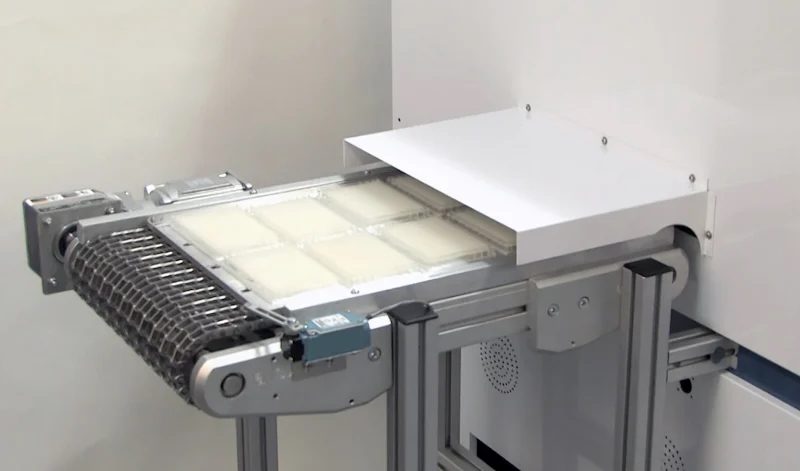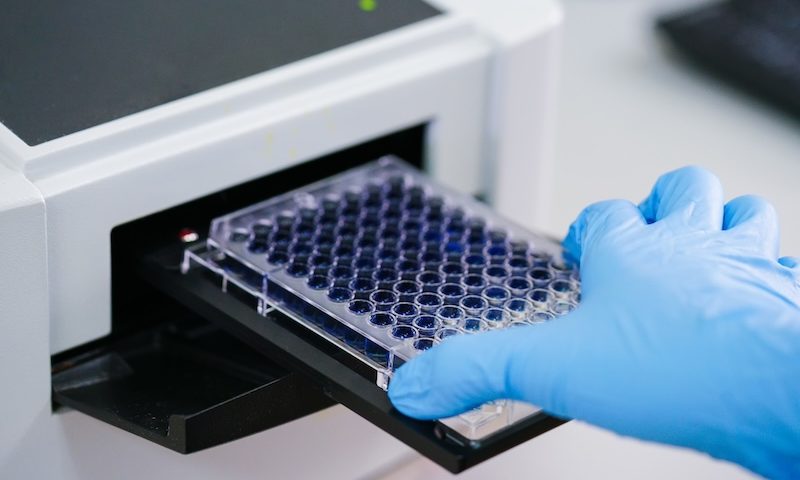Well plates have become indispensable in research, drug discovery, and diagnostic testing. However, these well plates often require advanced surface modification and functional coatings for high-resolution testing to improve the adhesion, proliferation, and signal-to-noise ratio. This surface modification enhances the interaction between cells, biomolecules, and drug compounds. In recent years, there has been a growing interest in utilizing well plate surface modification techniques to revolutionize the field of drug discovery.
Applications in Drug Discovery
Surface modification of well plates has vast implications for drug discovery applications. These modifications allow for better control and optimization of cell culture conditions, resulting in more accurate and reliable data. These modifications can also enhance the interaction between cells and drugs, making it easier to identify potential drug candidates.
Screening and Lead Optimization
Surface modification techniques have enabled the development of highly sensitive well plates that can detect even low concentrations of compounds. This has revolutionized the process of screening and lead optimization, allowing for faster and more efficient identification of potential drugs.
Surface Modification Techniques
 Surface modification techniques involve altering a material’s surface’s chemical or physical properties without changing its bulk properties. These modifications can be achieved through various methods, such as chemical treatments, plasma surface modification, or coating with functional materials. In the case of well plates, these surface modifications are essential to improve the performance of cells and biomolecules for drug discovery applications.
Surface modification techniques involve altering a material’s surface’s chemical or physical properties without changing its bulk properties. These modifications can be achieved through various methods, such as chemical treatments, plasma surface modification, or coating with functional materials. In the case of well plates, these surface modifications are essential to improve the performance of cells and biomolecules for drug discovery applications.
Chemical Treatments
Chemical treatments involve altering the surface properties of a material by exposing it to specific chemicals. For well plates, examples include treatment with oxygen plasma to increase hydrophilicity or coating with polylysine to promote cell adhesion. These chemical treatments can be precise and targeted, allowing for specific modifications of well plate surfaces.
Plasma Surface Modification
Plasma surface modification involves exposing a material’s surface to an ionized gas, which causes changes in the surface properties. This method is often used to improve the surface energy of well plates, making them more compatible with cell adhesion and growth. Plasma treatment can also introduce functional groups onto the surface, allowing for specific targeting of biomolecules.
Coating with Functional Materials
Coating well plates with functional materials is another popular surface modification technique. These coatings can be made from various materials, such as polymers, proteins, or peptides. These coatings can improve cell adhesion, proliferation, and differentiation on the surface of well plates.
Understanding the Limitations of Pre-coated Well Plates
While pre-coated well plates could meet the needs of more straightforward research requirements, they are often inadequate for innovative research and development in drug discovery and diagnostic test development. This is primarily due to their high costs and lack of customization. Researchers and scientists engaged in cutting-edge R&D projects require more flexibility and control over experimental conditions, which can be achieved through customizable, well plates tailored to their needs. By utilizing such customized well plates, researchers can optimize their experiments and achieve more accurate and reliable results, ultimately accelerating progress in biotechnology and healthcare.
The increasing demand for advanced surface modification techniques in the biotechnology and healthcare industries has led to the emergence of contract services for well plate surface modification. These service providers offer customizable surface modifications tailored to specific research requirements, saving researchers time, effort, and costs. Collaborating with these service providers allows for faster development and commercialization of new drugs, contributing to the overall growth of research and development purposes.
Unlocking the Power of Plasma Treatment Well Plates

Credit: PVA TePla
Plasma treatment offers a unique solution to overcome various challenges associated with well plates. By utilizing energetic species such as electrons, ions, radicals, neutrals, and radiations, plasma treatment effectively cleans, activates, chemically grafts, and deposits a wide range of chemistries onto well plate coatings.
Well plates are extensively used in research and diagnostic labs to conduct multiple tests simultaneously. Typically composed of polystyrene, these plates provide stability and optical clarity. However, untreated synthetic polymers used in well plates tend to be hydrophobic, lacking adequate cell binding sites. To address this issue, plasma treatments are employed to modify the surface of well plates, creating a hydrophilic surface that enhances cell adhesion and facilitates biomolecule attachment. This surface treatment also improves the wetting of wells, promotes cell proliferation, reduces the amount of serum or reagent necessary for testing, and minimizes the risk of contamination.
Advantages of Plasma Treatment
The benefits of plasma treatment include:
- Enhanced adhesion promotion and conjugation of bioactive molecules.
- Enhanced wetting of wells.
- Facilitated cell proliferation without clumping.
- Reduced risk of contamination.
- Improved binding sites.
The Role of Contract Service Providers
Companies such as PVA TePla, a leading provider of contract services, specialize in offering the technical expertise required for applying functional coatings. By engaging these service providers, businesses can expedite their time to market and avoid the need for costly in-house investments in equipment and expertise.
The emergence of contract services offering customized functional coatings has proven to be a highly effective and efficient alternative for manufacturers. For example, labware manufacturers can now acquire affordable, uncoated labware and entrust it to experts like PVA TePla for plasma treatment. This ensures optimal results and allows manufacturers to focus on their core competencies while benefiting from the specialized knowledge and capabilities of service providers like PVA TePla. With this approach, manufacturers can achieve superior quality, cost-effectiveness, and faster turnaround times in bringing their products to market.
The Benefits of Outsourcing to a Contract Services Provider
For researchers and manufacturers looking to reduce the costs of coated well plates while improving research quality and diagnostic test resolution, outsourcing to a qualified contract services provider can be an optimal solution. By partnering with a contract services provider, researchers and manufacturers can benefit from:
- Lower costs through economies of scale.
- Specialized expertise in surface modification techniques and equipment.
- Streamlined processes for coating customization.
- Faster time to market.
- Improved research quality and diagnostic test resolution.
Transitioning from R&D to Production
A contract services provider with extensive experience can offer priceless insights and guidance when transitioning from R&D to production. They possess deep knowledge and understanding of validation processes, production methods, fixturing, and hardware and software modifications. With state-of-the-art equipment and specialized expertise, they can seamlessly scale up production volumes, resulting in significant cost reductions for coated well plates. By leveraging their capabilities and resources, companies can achieve greater efficiency, reliability, and cost-effectiveness in their production processes.
PVA TePla, as a skilled contract services provider, combines the equipment and expertise needed for a smooth transition from R&D to production. Their range of systems allows for rapid scaling, allowing quick increases in production volumes. These systems include an R&D tool for lab work and a production tool with a larger volume chamber designed to handle higher capacities. As a result of this transition, the prices for coated well plates are significantly reduced. The entire process, from receiving and handling to processing, testing, and repackaging, is optimized using the largest chamber sizes to accommodate higher volumes.
Plasma Treatment in Biotechnology and Healthcare Industries
Surface modification of well plates is essential for achieving optimal results in drug discovery and diagnostic testing. By leveraging the expertise and capabilities of contract service providers, researchers and manufacturers can unlock the full potential of well plates through cost-effective and customized surface modification solutions. As technology advances, the research community must stay updated with the latest surface modification techniques and leverage them for groundbreaking drug development and diagnostics discoveries. Instead of settling for pre-coated well plates, consider the benefits of outsourcing to a contract services provider for revolutionary surface modification solutions. So, instead of settling for pre-coated well plates, consider the benefits of outsourcing to a contract services provider for revolutionary surface modification solutions.
For more information, contact Dr. Suraiya Nafis at PVA TePla America via phone at 800-527-5667, email at suraiyan@pvateplaamerica.com, or visit PVA TePla America.


